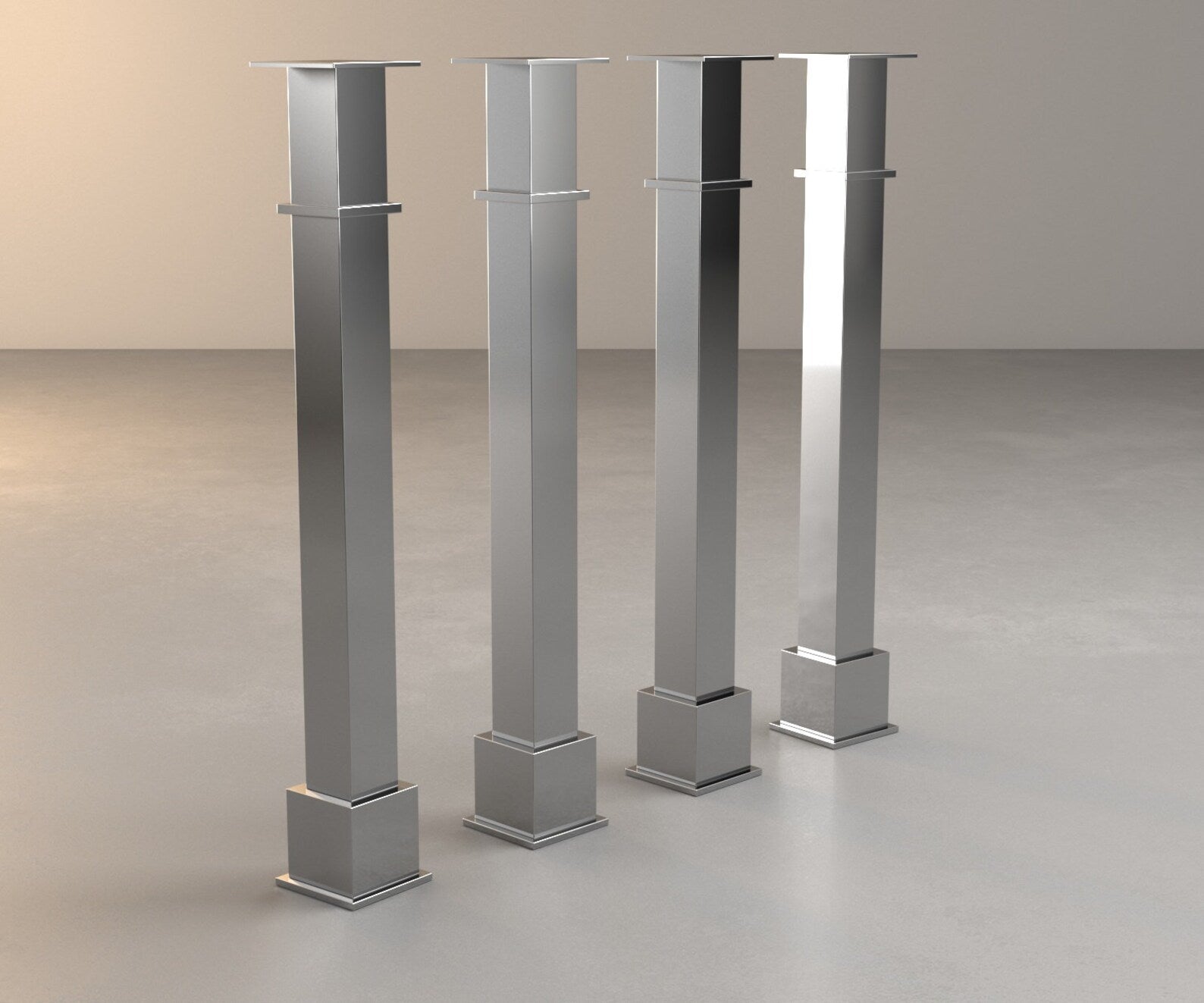Attain the Perfect Equilibrium of Kind and Function with Legs For Kitchen Island
Attain the Perfect Equilibrium of Kind and Function with Legs For Kitchen Island
Blog Article
Vital Factors to Consider When Selecting Legs For Cooking Area Island
Selecting the proper legs for a kitchen island includes a mindful evaluation of several elements that can substantially affect both functionality and visual allure. As we explore these elements, it comes to be clear that each decision can have significant ramifications for the total kitchen experience.
Material Options
When picking legs for a kitchen island, comprehending the numerous material options is necessary for attaining both aesthetic appeal and structural stability (Legs For Kitchen Island). The selection of product considerably affects not just the durability of the island but likewise its general style and capability
Metal legs, typically made from stainless steel or wrought iron, contribute a commercial and modern-day feeling while making sure sturdiness and stability. These materials are immune to put on and can sustain considerable weight, making them optimal for larger islands.
Another alternative is crafted materials, like MDF or plywood, which can be more cost-effective while still providing a variety of finishes. However, they may not give the very same degree of stability as solid wood or steel. Lastly, products such as acrylic or glass can produce a contemporary appearance, though they may call for extra support to make certain security.
Inevitably, the selection of product for kitchen area island legs should straighten with the preferred functionality and the general theme of the kitchen area.
Style and Style
:max_bytes(150000):strip_icc()/pink-marble-tile_House-of-Harvee-9f030193ae38484a9cb7ea2d71af66f4.jpg)
When considering style, the shape and finish of the legs are crucial. Tapered legs can provide a sense of lightness and beauty, while thicker, much more durable legs can share toughness and security. Furthermore, the surface-- be it painted, stained, or all-natural-- need to enhance the cabinets and counter top materials to develop a unified appearance.
Additionally, the style of the legs can also reflect personal preference. Custom-made or ornamental legs, such as those featuring intricate makings or special geometric shapes, can function as focal factors, including character and individuality to the kitchen area. Ultimately, the right selection will not only boost performance but additionally raise the aesthetic allure, making the kitchen area island a standout feature of the home.
Elevation Considerations
Picking the ideal elevation for kitchen island legs is crucial, as it straight impacts both capability and comfort. The typical height for a kitchen island commonly varies from 36 to 42 inches, aligning with typical countertop elevations. A 36-inch height is suitable for food preparation and food preparation, allowing for comfy use cooking area appliances and devices. Conversely, an elevation of 42 inches is commonly preferred for islands meant for bar seats, suiting taller feceses and offering a laid-back eating experience.

It is likewise necessary to represent users' elevations and preferences. Tailoring the height can ensure a comfy experience for all member of the family, making the cooking area island a much more pleasurable and useful area.
Weight Assistance
Making sure adequate you can look here weight assistance for kitchen island legs is important for both safety and security and performance. The cooking area island typically offers several objectives, including food prep work, dining, and extra storage space, requiring a durable support structure. When picking legs, it is important to take into consideration the overall weight capability required based on the island's meant usage and the products that will certainly be positioned on it.
The option of product for the legs plays a significant role in their weight-bearing capacities. Strong wood, metal, and durable composites typically supply superior stamina contrasted to lighter products. In addition, the design of the legs-- whether they are directly, tapered, or have a pedestal type-- can affect their capability to Extra resources disperse weight successfully throughout the framework.
Always speak with the maker's requirements relating to tons restrictions to make certain that the legs can maintain the designated weight without jeopardizing security. In summary, picking cooking area island legs with appropriate weight support is vital for creating a useful and secure culinary space.
Installment and Upkeep
Appropriate installation and maintenance of cooking area island legs are important for ensuring long life and stability. This commonly involves safeguarding the legs to the island base using ideal fasteners, making sure that the legs are degree and lined up.
As soon as installed, routine upkeep is required to protect the honesty and appearance of the legs - Legs For Kitchen Island. For wood legs, periodic cleaning with a wet towel and application of appropriate timber gloss can prevent wetness damages and maintain their finish. Steel legs might find more info require a gentle cleansing remedy to remove grease and gunk, adhered to by a dry cloth to avoid rust development
Furthermore, evaluate the legs consistently for indications of wear or damages, such as fractures or loosened joints. Tightening up screws or screws as required can likewise extend the life-span of the legs. By sticking to these setup and upkeep methods, house owners can make sure that their kitchen area island stays strong and visually appealing for several years to come.
Conclusion

Aesthetic coherence is critical in choosing the design and layout of legs for a kitchen island, as these elements significantly influence the general atmosphere of the area. Conical legs can supply a feeling of agility and style, while thicker, more durable legs can communicate strength and stability.Choosing the suitable height for kitchen island legs is important, as it directly affects both performance and comfort. In summary, selecting kitchen island legs with adequate weight assistance is essential for creating a useful and secure cooking area.
In conclusion, selecting legs for a kitchen island demands mindful factor to consider of different elements, including product alternatives, style, height, weight assistance, and installment.
Report this page